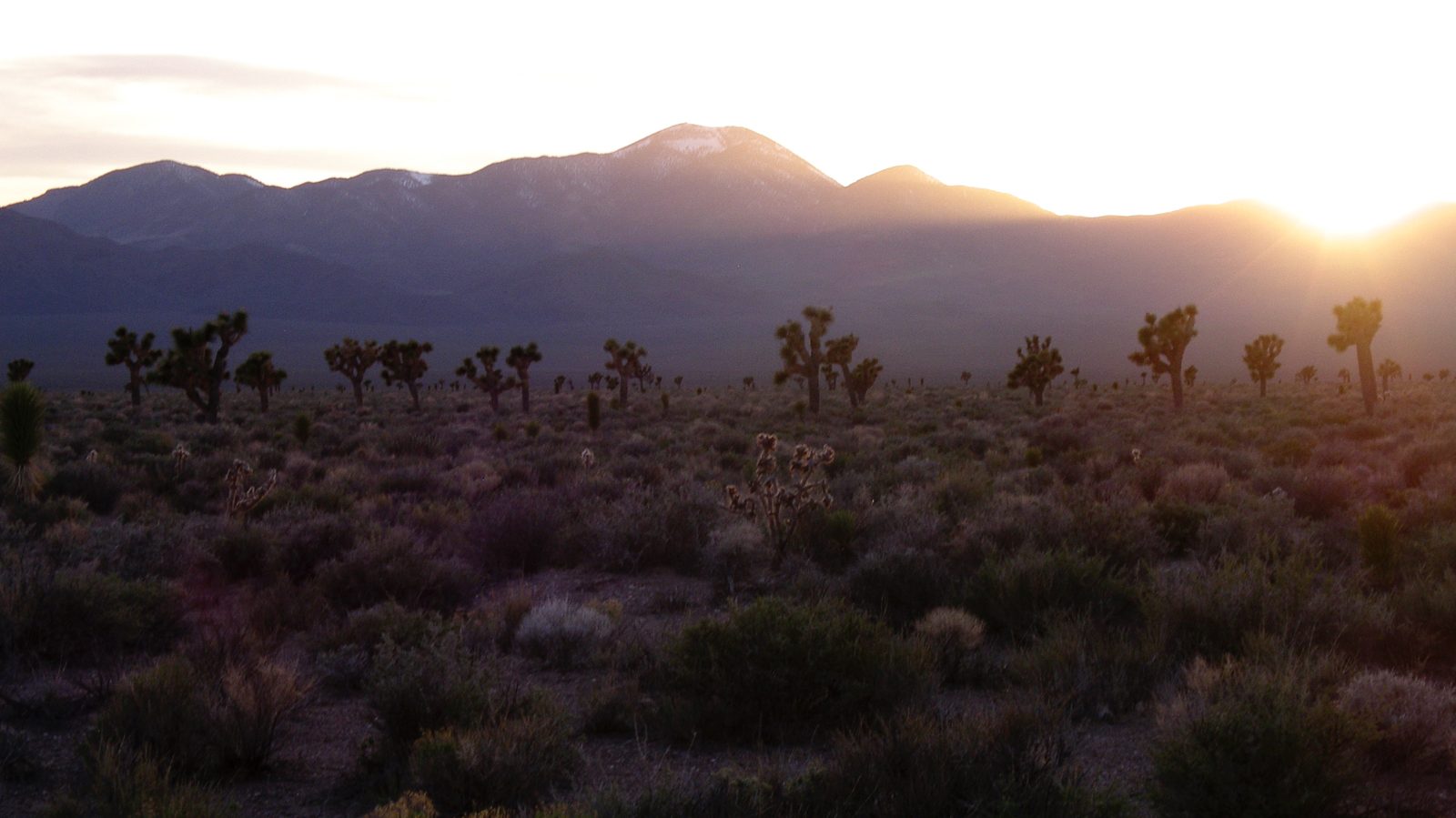
Sunset over the contact zone (Jeremy Yoder)
We had a whole aisle to ourselves at the Henderson, Nevada, Super Wal-Mart. The shopping list for a month of desert fieldwork with a team of up to twenty filled half a dozen shopping carts — apples and oranges by the five-pound bag, piles of potatoes and pasta and oatmeal, twenty-five dozen eggs, three different kinds of Oreos, dishes and five-gallon water jugs and an extra folding table. We stacked it all in a rental RV, and the next morning we drove north.
For years, JTGP collaborator Chris Smith has organized trips to Tikaboo Valley, a site at the northernmost end of the Mojave Desert where the two species of Joshua tree meet. Over the course of each flowering season, Chris leads a team of Willamette University students, field staff, out-of-town collaborators, and willing volunteers in an ongoing experiment to understand how the trees match two different, highly specialized, pollinator species. Tikaboo provides a natural “common garden” where it’s possible to swap the pollinator species between the two Joshua trees, to see how things work out for all of them.
I drove up from Los Angeles to join Chris and his advance team in setting up camp in advance of the arrival of more than a dozen Willamette students for this week’s spring break. I was sorry to head back before things got properly underway, but I had a couple days to spend with the team scouting for flowering trees — a fine tour of Tikaboo Valley at the very beginning of spring.
Click on the gallery below to scroll through some images of the trip!








You must be logged in to post a comment.